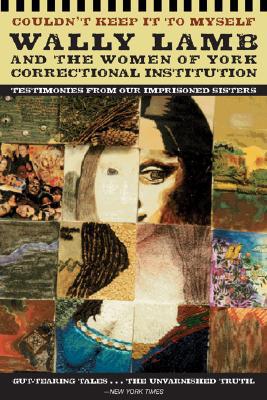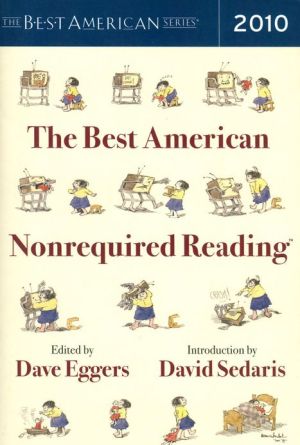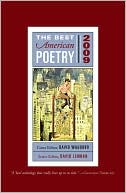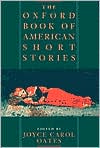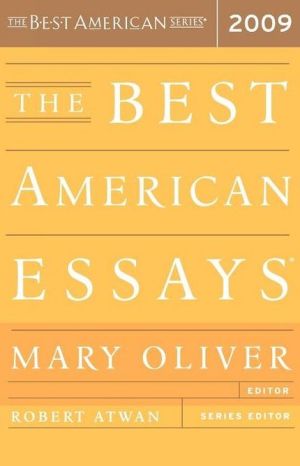Couldn't Keep It to Myself: Testimonies from Our Imprisoned Sisters
In a stunning work of insight and hope, New York Times bestselling author Wally Lamb once again reveals his unmatched talent for finding humanity in the lost and lonely and celebrates the transforming power of the written word.\ For several years, Lamb has taught writing to a group of women prisoners at York Correctional Institution in Connecticut. In this unforgettable collection, the women of York describe in their own words how they were imprisoned by abuse, rejection, and their own...
Search in google:
In a stunning work of insight and hope, New York Times bestselling author Wally Lamb once again reveals his unmatched talent for finding humanity in the lost and lonely and celebrates the transforming power of the written word.For several years, Lamb has taught writing to a group of women prisoners at York Correctional Institution in Connecticut. In this unforgettable collection, the women of York describe in their own words how they were imprisoned by abuse, rejection, and their own self-destructive impulses long before they entered the criminal justice system. Yet these are powerful stories of hope and healing, told by writers who have left victimhood behind.In his moving introduction, Lamb describes the incredible journey of expression and self-awareness the women took through their writing and shares how they challenged him as a teacher and as a fellow author. Couldn't Keep It to Myself is a true testament to the process of finding oneself and working toward a better day.The Los Angeles TimesOne truth this book affirms is the capacity for people to change. The writers of Couldn't Keep It to Myself chart their own journeys of growth, navigating the terrain of their internal worlds, their pasts and present prison realities. Who they have become is clear both in self-awareness and what they do with their lives teaching others, advocacy, computer work, construction in prison and out. It is in this change that hope resides; lying next to and rising out of despair, hope permeates the book. Why, in the end, does Lamb want us to care about 10 women in prison? Perhaps because in noticing the humanity of others, we become more human ourselves. — Kathy Boudin
Couldn't Keep It to Myself\ Testimonies from Our Imprisoned Sisters \ \ By Wally Lamb and the Women of the York Correctional Institution \ HarperCollins Publishers\ Copyright © 2003 Wally Lamb\ All right reserved.\ ISBN: 006053429X \ \ \ Chapter One\ Couldn't Keep it to Ourselves\ The toy department at the Durable store sold two blackboards. The modest two-by-three-foot model came with wall brackets and a three-piece starter box of chalk. Its deluxe cousin was framed in wood, had legs and feet, and came "loaded": a pair of erasers, a pointer, a twelve-stick chalk set, and a bonus box of colored chalk. I was a third-grader when I spotted that blackboard. Good-bye to Lincoln Logs and Louisville Sluggers. From the age of eight, I wanted to teach.\ My first students were my older sisters. As preteenagers, Gail and Vita were more interested in imitating the dance steps of the American Bandstand "regulars" than in playing school, but a direct order from our mother sent them trudging upstairs to my classroom. I'd prepared for their arrival: work sheets, white shirt and clip-on tie, alarm clock hidden under my bed for the surprise fire drill. If my sisters had to play, then they would playact. Vita cast herself as hip-swiveling Cookie Crane, as smoldering a third-grader as there ever was. Gail was Rippy Van Snoot, the class incorrigible. I was launching into opening exercises when Rippy reached past me, grabbed a blackboard eraser, and bounced it off my forehead. Cookie shrieked with delight and lit an imaginary cigarette. I forget which reprobate flung my flash cards into the air and made the room rain arithmetic.\ Fourteen years later I was a high school English teacher with my first actual students. Paula Plunkett and Seth Jinks were the two I remember most vividly from my rookie year. Paula had pretty eyes and graceful penmanship, but she was encased in a fortress of fat. Sad and isolated, she sat at a special table in back because she didn't fit the desks. She never spoke; no one ever spoke to her. In my first-year-teacher naïveté, I sought to draw Paula into the dynamic, thinking group work and class discussion would save her. My plan failed miserably.\ Seth Jinks was in the twelfth-grade class I'd been assigned because I had no seniority. "The sweathogs," these kids dubbed themselves. I was twenty-one, and so were three or four of my sweathogs. We honeymooned for a couple of weeks. Then one morning I walked up the aisle and tapped Seth Jinks on the shoulder. I needed to wake him up so I could exchange the paperback he hadn't read for the new one he wasn't going to read. "Seth, get your head off the desk," I said. "Here's the new book." No response. I poked him. He looked up at me with little-boy-lost eyes. "Go fuck yourself," he said. The room went quiet. The sweathogs, Seth, and I held our collective breath and waited for my response. And in that uneasy silence, and the days, and months, and decades that followed, teaching became for me not just a job but a calling. I have found special meaning in working with hard nuts, tough cookies, and hurtin' buckaroos - those children among us who are the walking wounded.\ That said, I did not want to go to York Correctional Institution, Connecticut's maximum-security prison for women, on that warm August afternoon in 1999. I was keeping a promise I'd made to Marge Cohen, the prison school librarian. Marge had called three months earlier, as I was preparing for a twelve-city book tour in support of my second novel, I Know This Much Is True. Several suicides and suicide attempts had triggered an epidemic of despair at the prison, Marge had explained; the school staff, groping to find help, was canvasing the community. They thought writing might prove useful to the women as a coping tool. Would I come and speak? Because I'm frequently asked to support good causes and have a hard time saying no, I keep an index card taped to my phone - a scripted refusal that allows me to preserve family and writing time. That day, though, I couldn't find my card. I told Marge I'd visit when I got back from my book tour.\ I would never have predicted an author's life for myself, but when I was thirty, while on summer hiatus from teaching, I'd sat down and written a short story on a whim. I liked doing it and wrote another. For my third story, I fused a sarcastic voice to the visual memory of the mute, isolated Paula Plunkett. For years I had worried and wondered about my former student. What had become of her? What had all that weight meant? Who had she been as a child? In the absence of actual knowledge, the life I invented around her remembered image became my first novel, She's Come Undone. It took me nine years to figure out the story of that bruised fictional soul whom I'd fathered and then grown to love and worry over. I loved and stewed over the flawed identical twins of my second novel, too - one of whom had a generous measure of Seth Jinks's anger. What I did not see coming was that the world would embrace these characters also. "Hello, Wally? Guess what?" The caller on the other end of the phone line was Oprah Winfrey. She called twice, once for each novel. The result: best-seller lists, limo rides, movie deals, and foreign translations. Oprah's Book Club had taken my life by the seat of the pants and sent me on the road.\ Rock stars on tour bust up their hotel rooms. They get drunk or high, trash the furniture with their bandmates, party with groupies. But authors on tour are quieter, more solitary souls. Between appointments, we sit by ourselves in our rooms, nibbling like prairie dogs on room service sandwiches, or ironing our clothes for the next reading, or watching Judge Judy. Perhaps the most surreal moment during my book tour that summer occurred in a hotel room in Dayton, Ohio. While channel-surfing, I came upon the quiz show Jeopardy! at the exact moment my name surfaced. "He wrote the novel She's Come Undone," Alex Trebek stated. In the long and torturous pause that followed, the three contestants stood there, lockjawed and mute, itching but unable to press their thumbs to their buzzers. And sitting on the edge of the bed in room 417 of the Westin Hotel, I uttered in a sheepish voice, "Who is Wally Lamb?"\ I'm a family man, a fiction writer, a teacher, and a guy who can't say no without the index card. On that nervous first drive to York Correctional Institution, I sought to calm myself with music. I was fumbling with CD cases and radio buttons when suddenly, over the airwaves, a piano pounded and the car shook with the vocal thunder of Newark, New Jersey's Abyssinian Baptist Choir. The unfamiliar song so overpowered me that I pulled to the shoulder to listen. When it ended, I looked up at the highway sign in front of which I'd landed. correctional facility area, it said. do not stop. The inexplicable emotional wallop of that moment fills me with wonder to this day.\ To gain access to the women of York prison, you check in with the guard at the main gate, hang your laminated badge on your shirt pocket, walk through a metal detector, then pass through a series of ten doors, some of which slide open mysteriously after you stand and wait. You don't see who's flipping the switches, so it's an Orwellian entrance. At the prison school, I met my liaison, Dale Griffith, a warm and exuberant English teacher. Dale and I arranged the chairs in a circle, a uniformed corrections officer bellowed orders from the corridor, and thirty inmates entered the room.\ Dressed identically in cranberry T-shirts and pocketless jeans, the women came in all colors, shapes, sizes, and degrees of gender identification. Their attitudes ranged from hangdog to Queen of Sheba. Most had shown up not to write but to check out "that guy who was on Oprah." I spoke. We tried some exercises. I asked if anyone had questions about writing. Several hands shot into the air. "You met Oprah?" "What's Oprah like?" "Oprah's cool, you know what I'm sayin'?" Uh, was that a question?\ At the end of my talk, one of the women stood, thanked me for coming, and pitched me a curveball. "You coming back?" she asked. Thirty pairs of wary eyes were upon me and my index card was back in my office. "Uh, well . . . okay," I said. "Write something and I'll see you in two weeks. Any subject, two pages minimum. Your drafts will be your tickets into the workshop."\ At session two, fifteen of the thirty chairs were empty. Stacie wanted praise, not feedback. Manhattan said she'd meant to be vague and nonspecific - that her business wasn't necessarily the reader's business. Ruth must have thought she was a guest on Oprah; she'd written only a paragraph, but man oh man, did she want to talk. At age fifty-five Diane was the senior member of the group. For ninety minutes she hunched forward, fists clenched on her desktop. Her suspicious eyes followed my every move. Diane had written under the pseudonym Natasha and had exacted a promise before class that her work would never, ever be read aloud. I predicted she'd be gone by session three.\ But it was during session three that Diane Bartholomew ("Snapshots of My Early Life") couldn't keep her writing to herself. Her shaky hand went up and she asked if she could share what she'd written. In a barely audible voice, she read a disjointed, two-page summary of her horrific life story: incest, savage abuse, spousal homicide, lawyerly indifference, and, in prison, parallel battles against breast cancer and deep, dark depression. When she stopped, there was silence, a communal intake of breath. Then, applause - a single pair of hands at first, joined by another pair, and then by everyone. Bartholomew had sledgehammered the dam of distrust, and the women's writing began to flow.\ That was three years ago. I stopped counting sessions somewhere around number fifty. Writers have come and gone: the narcotics-addicted nurse who wrote a moving apologia to a deceased aunt whose support had never wavered; the high school athlete who, a month after graduation, brandished her softball bat during a convenience store robbery and wrote to figure out why; the young alcoholic mother who time-traveled, penning a personal letter to one of the prison's original 1917 inmates, also an alcoholic. The workshop sessions have been a journey rich with laughter, tears, heart-stopping leaps of faith, and miraculous personal victories. There have been bumps in the road, too. Addicts are elusive; they tend to begin promising drafts, take them to some interesting midway point, then give up on themselves and stop coming. There have been trust issues. Prison is not a place where trust is given easily, and a writer who shares her work in progress risks exposure. That risk taking must be honored. Only the writer should decide when, and if, her work is ready for the eyes and ears of nongroup members - ready, in other words, to go public. If another group member breaches that trust, she has to leave. Similarly, a few con artists and drama queens have been handed their walking papers. A functional writing community cannot accommodate the needs of would-be superstars or instigators of the guess-what-she-said-about-you variety. But those have been the exceptions. The brave writers whose work is represented in this volume have acted in good faith, faced their demons, stayed the course, and revised relentlessly. And in taking on the subject of themselves - making themselves vulnerable to the unseen reader - they have exchanged powerlessness for the power that comes with self-awareness.\ "I started writing because of a terrible feeling of powerlessness," the novelist Anita Brookner has said. The National Book Award winner Alice McDermott noted that the most difficult thing about becoming a writer was convincing herself that she had anything to say that people would want to read. "There's nothing to writing," the columnist Red Smith once commented. "All you do is sit down at a typewriter and open a vein."\ Michelle Jessamy ("Motherlove") was fourteen when she became pregnant by her teenage boyfriend. Despite the challenges, Jessamy's impending motherhood helped her get closer to her own emotionally distant mother. As she drafted her memory piece, that mother-daughter epiphany emerged as the centerpiece. Then, mid-draft, Jessamy hit a snag. She began writing a flashback to an earlier instance of sexual abuse - a hallway molestation by a friend of the family when she was eleven. The painful incident was integral to the story she needed to tell, but disclosing her long-kept secret made Jessamy feel uncomfortable. She stopped writing. But self-censorship felt uncomfortable, too. Jessamy had worked hard on her essay and wanted to see it through. The solution? A change of genre. On paper, Jessamy became Mo'Shay Shambly, and the pronoun I became she. Mo'Shay had the same hazel eyes as Michelle, the same experiences. But now Jessamy was writing autobiographical fiction. That little bit of distance unblocked her and she finished her piece.\ Brenda Medina ("Hell, and How I Got Here") was self-censoring like Michelle Jessamy, but for a very different reason. For months after she joined our group, she labored on the same short essay about the death of her uncle Carlos - draft after draft after draft. One day I suggested to Medina that, God bless him, I didn't think I had the strength to attend to poor Uncle Carlos's death one more time. "There's something else I want to write about, but I can't," she told me. That "something" was what had landed her in prison ten years earlier at age seventeen: her affiliation with a violent street gang.\ York Correctional Institution is vigilant in its efforts to eliminate gang influence within the compound. Incarcerated gang members who choose to uphold their allegiance to "the family" pay a steep price in the form of punitive segregation, loss of privileges, and loss of the "good time" that can shorten their stay on the inside. A self-described punk when she arrived at York, Brenda Medina had traveled a long and difficult road as an inmate, freeing herself from the psychological grip of her "family" and undertaking the rigorous step-by-step process by which an inmate repudiates her gang affiliation and begins rehabilitation in earnest. Even mentioning the name of a gang can cast suspicion that the inmate has reneged on her disaffiliation. Medina's very real fear was that, if she wrote about her past life, her work might be seized, taken out of context, and misconstrued as gang-friendly. If that happened, she could lose much of what she had worked so hard to achieve. My collaborator, Dale Griffith, dealt with the problem directly. She sought and received permission from prison officials for Medina to take up her gang experience as subject matter. With that hurdle cleared, the writer was on her way to a personal essay that, far from glorifying gangs, depicts their insidious hold on young people's lives and the cancerous destruction of their futures.\ In her much-loved book on writing, Bird by Bird: Some Instructions on Writing and Life, Anne Lamott observes: "We write to expose the unexposed.\ \ Continues...\ \ \ \ Excerpted from Couldn't Keep It to Myself by Wally Lamb and the Women of the York Correctional Institution Copyright © 2003 by Wally Lamb\ Excerpted by permission. All rights reserved. No part of this excerpt may be reproduced or reprinted without permission in writing from the publisher. \ \
AcknowledgmentsNotes to the ReaderCouldn't Keep it to Ourselves1The True Face of Earth19Orbiting Izzy53Thefts65Hair Chronicles95Three Steps Past the Monkeys113Hell, and How I Got Here143Christmas in Prison177Faith, Power, and Pants185Puzzle Pieces211Motherlove245Snapshots of My Early Life267Bad Girls335Sources and Suggested Reading351
\ From Barnes & NobleWally Lamb's novels She's Come Undone and I Know This Much Is True were both Oprah's Book Club selections and No. 1 New York Times bestsellers. On the surface, Couldn't Keep It to Myself is far different than these works of fiction. In this heart-wrenching collection, Lamb introduces and presents 11 female writers who happen to be convicted felons. Their pieces, as potent as their personalities, would be less accessible without Lamb's modest and disarming preludes. "Prison," he writes, "is not a place where trust is given easily." Obviously, he earned that trust, and we now share its fruits.\ \ \ \ \ The Los Angeles TimesOne truth this book affirms is the capacity for people to change. The writers of Couldn't Keep It to Myself chart their own journeys of growth, navigating the terrain of their internal worlds, their pasts and present prison realities. Who they have become is clear both in self-awareness and what they do with their lives — teaching others, advocacy, computer work, construction in prison and out. It is in this change that hope resides; lying next to and rising out of despair, hope permeates the book. Why, in the end, does Lamb want us to care about 10 women in prison? Perhaps because in noticing the humanity of others, we become more human ourselves. — Kathy Boudin\ \ \ Publishers WeeklyBestselling author and Oprah Winfrey favorite Lamb (She's Come Undone; I Know This Much Is True) takes a cue from Winfrey herself in collecting and editing this book of writings gleaned from a workshop he conducted for the female inmates of Connecticut's York Correctional Institution. The result is an intriguing and powerful collection of unlikely literary debuts. Although the 11 selections cover the range one might expect from writings plucked from a women's prison-tales of broken homes, poverty, violence, teenage pregnancy, race and gender bias, and, of course, crime and punishment-Lamb succeeds in giving the collection an intense, recognizable emotional core reminiscent of his blockbuster debut novel, She's Come Undone. Indeed, each selection bears the marks of Lamb's heavy involvement-the clipped yet elegant prose and the delicate, occasionally humorous manner in which difficult emotional situations are rendered. Standout selections include Nancy Whiteley's opening remembrance of her troubled adolescence and Diane Bartholomew's artfully rendered, heart-wrenching "Snapshots of My Early Life." As a sad footnote, Bartholomew, whom Lamb credits with inspiring the success of the workshop, will never see her opus in print. Sent to prison in 1990 for murdering her abusive husband, Bartholomew was stricken with cancer while serving her sentence and died in November 2001. In his introduction, Lamb calls the workshop "a journey rich with laughter, tears, [and] heart-stopping leaps of faith." To the credit of Lamb and his authors, this book, the end product of the workshop, is as well. (On sale Feb. 1) Forecast: Although this book is a departure for Lamb, fans of She's Come Undone will undoubtedly enjoy it. Copyright 2002 Cahners Business Information.\ \ \ \ \ Library JournalAt the urgent request of the librarian at York Correctional Institution in Connecticut, Lamb (She's Come Undone) organized a writing class for incarcerated women. The intention was to make writing a coping tool that might counter an epidemic of despair at the prison. The 12 pieces in this volume are the best of the students' efforts, and as efforts they are noteworthy, offering memoirs of childhood and acute observations about prison life. In "Three Steps Past the Monkeys," Nancy Birkla chronicles her dependence on drugs by describing her early dependence on candy. In "Christmas in Prison," Robin Cullen describes a congregation at a prison church service as "a rainbow of skin tones, their chocolate, honey vanilla, and raspberry ripple-colored hair topped with crocheted red scrunchies that sit like cherries atop ice cream parlor hairdos." All in all, the volume represents good student writing and a success from everyone's point of view. If it is vying for shelf space with professional writers, it will probably (and justifiably) lose out. But if funds permit, it is worth considering.-Frances Sandiford, formerly with Green Haven Correctional Facility Lib., Stormville, NY Copyright 2003 Reed Business Information.\ \ \ \ \ Kirkus ReviewsIntense attestations of lives that ran afoul of the law, from women who have done or are doing time at a prison in Connecticut. Bestselling novelist Lamb (I Know This Much Is True, 1998, etc.) teaches a course in writing at the York Correctional Institution, and he offers here a selection of ten works from the women in his class, plus one by his co-instructor. The pieces are uniformly wrenching, reported from desperate circumstances by authors doomed to punishment. Yet they are as far from self-pity as possible, written by extremely self-aware authors who give a clear sense of setting out to take some degree of control of their destinies. Each piece is a probing re-examination of its author’s life and of the reasons she ended up in prison. Some recount childhoods taxing by any yardstick, years of learning to become "experts at detecting the slightest barometric fluctuations of Storm Mom," or of being raped by a father who’d just lost the house in a card game—and, at term, having the baby spirited away before its mother was allowed to touch him. There are demons aplenty, inner ones begging to be tamed by drugs, and outer ones, like husbands, uncontrollable (one woman asks, "Why do I feel safer here in prison than I felt at home?"). The maximum-security prison is a tough house, and prospects of release for some of the writers are dim: "Ineligible for parole, I have served the first nine years of my twenty-five year sentence. I am 27." This same person will also say, "I’m kept afloat by my writing." And her writing, like other of the women’s, is lean, with the momentum and clarity needed for its work of helping frame and make sense of these authors’ situations. There are things, says Lamb,that need "to be known about prison and prisoners. There are misconceptions to be abandoned, biases to be dropped." Here’s a step in that direction.\ \
